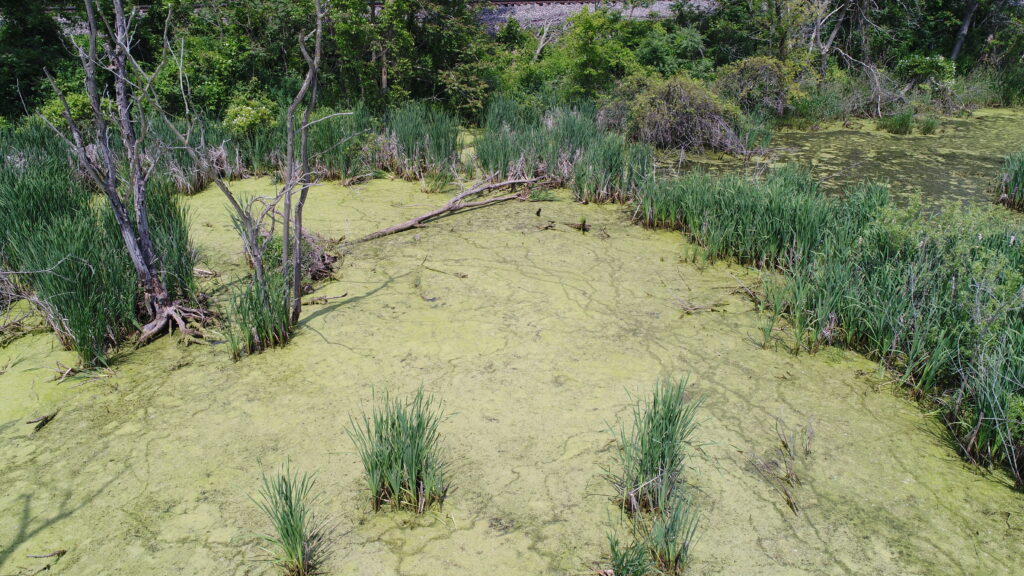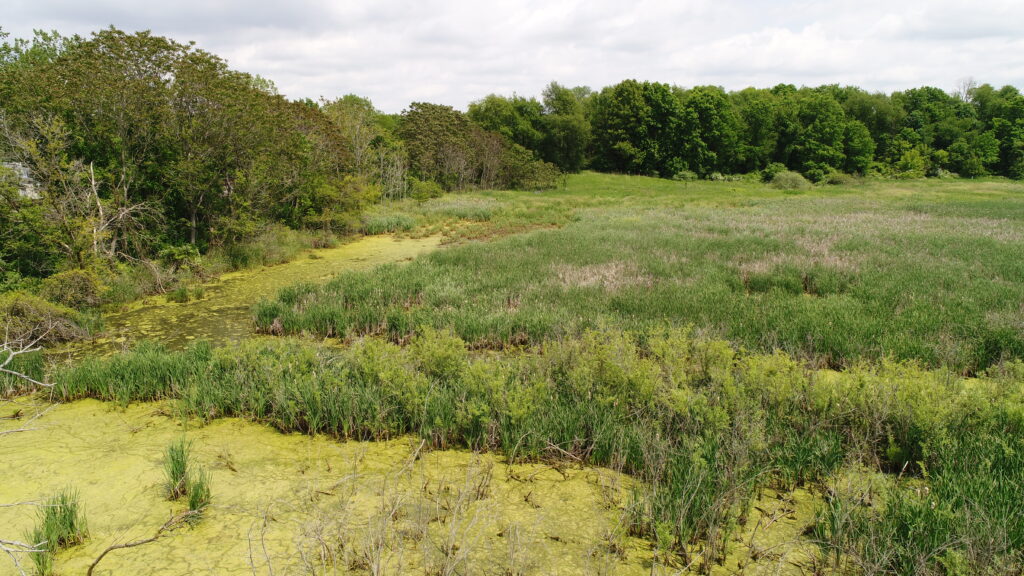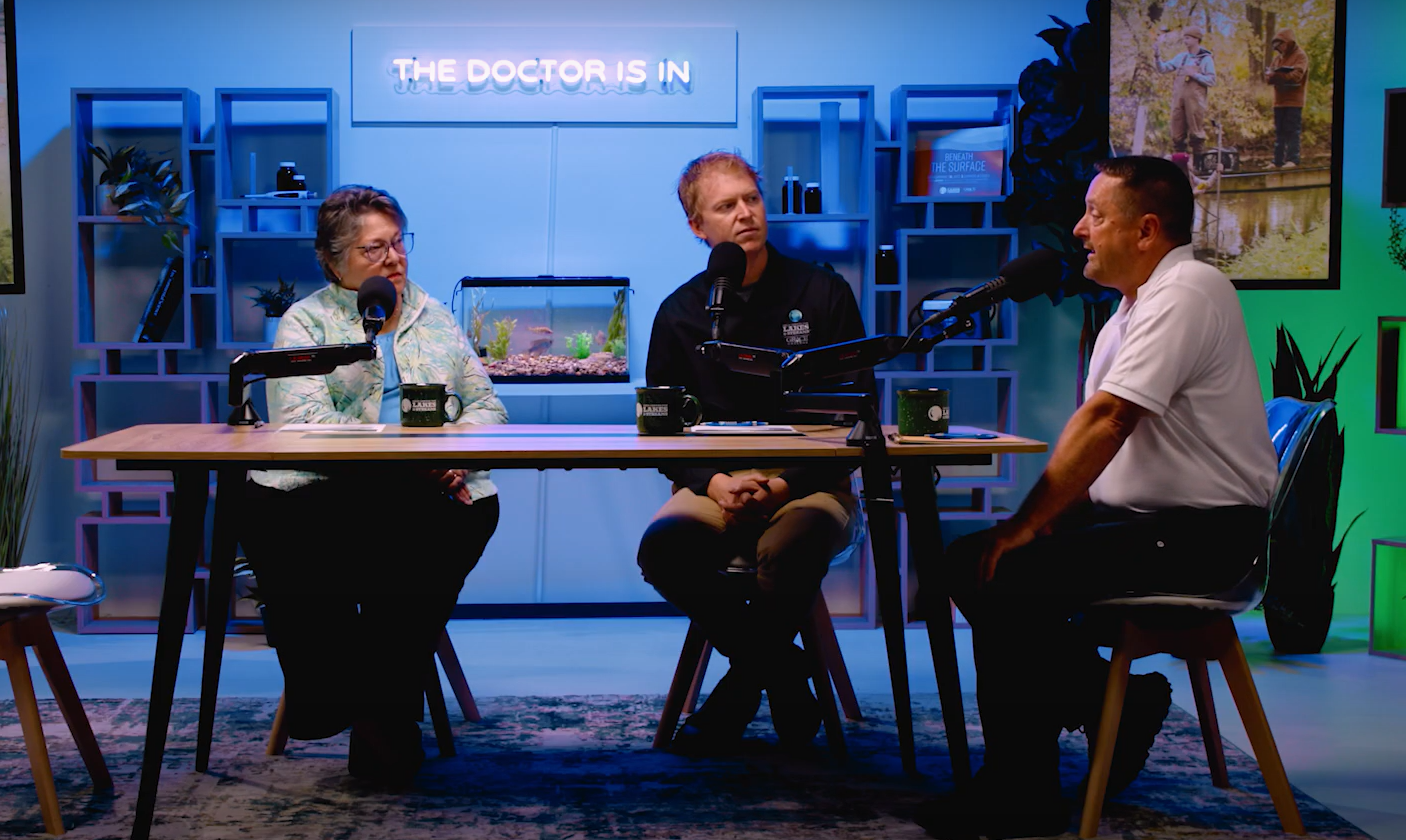Wetlands: Nature’s Damp Treasures
By Steve Coyle, wetlands expert
When you envision wetlands, what comes to mind? Wet, dark, dreary places or seas of green glades? Let’s explore these natural treasures and the benefits they provide to us and our lakes.

What Are Wetlands?
It is all in the name, Wet_Lands:
-
Are areas that are wet all or part of the time
-
Have soils derived from wet, low oxygen conditions
-
Host vegetation that thrives in these conditions.
But it is not always straightforward. Although wetlands are usually wet, they might not be year-round. Constantly wet swamps are wetlands. So are some prairies which are wet most of the time but look dry during the summer. Sometimes, you cannot see the water which lies just below the surface.
Wetlands differ due to variations in vegetation, soils, landscape, climate, and water chemistry. They can have surface water plants, clusters of trees or shrubs, open meadows, shorelines, or a combination! Scientists have developed over 50 different descriptions across nine general categories. However, four categories are mainly used in our region.
Top in Indiana: Kosciusko and Noble Counties have over 6% of the state wetlands.
Wetland Types
Marshes are mostly underwater and dominated by soft-stemmed plants. Lakes like Webster and The Backwaters have good examples of freshwater marshes.
Swamps are home to woody plants like trees and shrubs that like their feet wet. Find them in the Tri-County Fish & Wildlife Area. Most lakes in Kosciusko County have combinations of marshes and swamps.
Bogs are characterized by spongy peat deposits and covered by a thick carpet of sphagnum moss.
Fens are peat areas covered by grasses, reeds, and flowers. Fens and bogs are sources of prized gardening moss. While both exist in our region, they typically are found around the Great Lakes and other northern climes.
Not Just a Dirty Swamp
Wetlands are the transition between solid land and deeper open water. They perform vital environmental and economic functions. They are the most biologically diverse and productive of all ecosystems. Wetlands act as “nurseries” for aquatic life and provide habitats for hundreds of plants and animals. Wetlands help recharge groundwater used for drinking water and agriculture.
As sponges, they absorb flood water from major rain events and reduce wave action on lakes. Wetlands are “nature’s kidneys” and help filter water and runoff from parking lots, home lawns, and farmland before they enter lakes.

Indiana lost 85% of its wetlands since the 1780s
The state of Kosciusko County wetlands
Our lake region is blessed with many wetlands that provide beauty and benefits. But wetlands are in danger. Seawalls eliminate natural shorelines, including wetlands, which intensifies wave activity. Over the past decades, waves have eroded wetland shorelines by up to 70 feet in certain areas. Commercial activities reduce the number of wetlands recharging our groundwater.
Of our remaining wetlands, many are in decline – they age like humans do! Unfortunately, human activities can accelerate wetland aging by increasing sediment runoff and clogging wetland plants. Tired wetlands no longer perform the beneficial functions we listed.
Whether the wetland near you is beautiful and lush or spooky and dark, it has the potential to provide great benefits to your lake for years to come! Assessing and revitalizing wetlands is part of Lake Rx, the Lilly Center’s plan for healthy lakes.

Wetland Wonders: A Lakes Defense Mechanism
We often highlight the usefulness of wetlands, and this is for good reason. On this episode of the Lake Doctor Podcast, we’re joined by Scott Fetters from the US Fish and Wildlife Service, who shares his knowledge on wetland restoration.